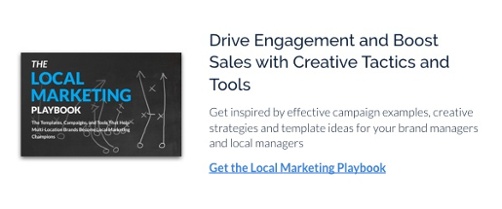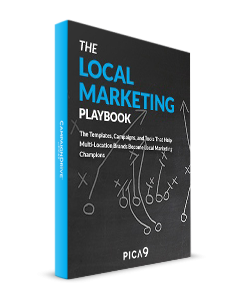Sometimes, these obstacles are so significant that they can derail the brand-to-local effort entirely. Talented people, after all, will only spend so much time on efforts that don't stand a good chance of success.
This is a shame, because research tells us that sound brand execution at the local level is more important today than ever—not just to achieve the classic benefits of pricing power and repeat purchase, but to fend off new threats in markets that have been deeply disrupted by changing behaviors brought about by a year of pandemic lockdown and recovery.
So, I thought it might be useful to identify the four most common barriers to better brand-to-local marketing, outline the symptoms of each, and sketch out the solutions we've seen category leaders adopt to overcome these obstacles.
1. Leadership Doesn't Prioritize the Brand-to-Local Problem
By far, brand managers tell us, the top obstacle to success is lack of awareness from senior leadership that brand integrity and local marketer productivity are key to success in winning today's brand battles. In a recent survey by Forrester Research more than one third of multi-location brands did not identify marketing effectiveness at the local store level as a key priority. While ample budgets are allocated for high-tech projects in artificial intelligence, automated personalization, etc., the high-touch nature of
local marketing too often gets short shrift.
You'll know you're facing this problem if brand-to-local (or some variant) isn't featured prominently as a line item in your marketing budget. If, for example, your in-house agency staff got cut during the pandemic and isn't returning to full strength, it stands to reason that brand-to-local isn't coming up strong enough on leadership's radar screens.
You might also find that efforts to support local marketers are confined to consumer-like tools, like DropBox, which grow up in good-hearted but ultimately inefficient efforts to fulfill the needs of local marketers "on the fly."
There's no instant way to change these attitudes. But you can make progress on the problem, by:
Feeding leadership credible research on the importance of brand-to-local marketing.
Check out our Brand-to-Local Marketing Reading List. You'll find a list of brand-to-local research articles from respected sources like The Harvard Business Review.
Dramatize your organization's challenges by conducting interviews with a few of your largest local marketing partners.
According to MediaPost, for more than 61% of local marketing partners, local marketing support is one of their top priorities. They'll be able to tell you what they need, what your brand provides, and how large the gap is between the two. Make a habit of doing this annually, and track your results over time so you can assess progress.
All this really takes is a little bit of mystery shopping. Look for examples of off-brand executions in store. Sign up for communications at the local level and see how consistent brand delivery is in that channel. Examine your competitor's local store websites to see if they truly create a presence unique to the community. If your brand is falling behind, it will be clear—to you and to leadership both!

2. Resistance From Creative Teams Regarding Local Marketing
Truth be told, most creatives don't get into the advertising and marketing business to solve local store problems. Naturally, they want to focus on "above the line", high-ticket assignments like broadcast TV, or the global brand website.
They may also resist the content-management challenges that come with driving local marketing in a disciplined and consistent way—claiming that these kinds of tasks are better left to to technologists rather than creatives.
All of these objections can leave your local marketing efforts and content at the bottom of your in-house agency's task list—which means you'll soon suffer from stale, outdated content and layouts that prompt your local marketers to start clamoring for special one-off executions to meet their unique needs. This is what we call
The Vicious Cycle of Local Marketing Chaos.
So, how can you help your creatives to embrace the brand-to-local opportunity?
- Put the newspaper under their nose. Literally. If you've got an example in local print of off-brand executions, show it to your creative team and leverage the ensuing outrage to create some passion for preventing future "creative crimes." As with senior leadership, it can sometimes be that an anecdotal example is a lot more persuasive than realms of statistical data. So, find those off-brand executions and file them in your top desk drawer, so you can pull them out and light a fire whenever you need.
- Ask your local marketing vendor to install some templates for you. You'd be amazed how quickly your creative partners will recognize that template composition is a "need to have", once they see how powerful and flexible today's templating systems can be.
- Identify a member of your creative team who's eager to learn the art of template composition. When you find that intrepid teammate, make sure to put them in touch directly with the team on the vendor side of your brand-to-local platform. They will learn quickly and your vendor should be motivated to help them develop these skills.
3. Immature Brand Execution
Often in relatively new and rapidly growing franchise or other multi-location businesses, the issue of branding takes a back seat to revenue generation. Despite the research that demonstrates the vital importance of brand, the temptation to cut corners in pursuit of the next sale is just too great.
You'll see evidence of this from HQ on down in these organizations. And you might quickly conclude that this is no environment for a brand to local martech operation. But the fact is, you may find that your local marketers can actually help to push the organization toward greater brand integrity, simply because they feel the lack of a strong brand more keenly at the local level than anywhere else.
In these cases, it's best to start small, with just a few, high-visibility local marketers. Provide these players with the "core" brand materials, and work closely with them to demonstrate the impact this can have on creative. Executed properly, a pilot program can soon have other franchisees clamoring to participate; and that enthusiasm, in turn, may help leadership to arrive more quickly at the conclusion that
disciplined branding is almost always highly effective—and can be cost and time effective too.
4. Chaotic Martech Stack
According to Hubspot's Scott Brinker—often seen as the "father" of martech—there are more than 8,000 martech platforms available for purchase, with more on the way every day. This complexity can lead brand managers to conclude that the addition of yet another system could just possibly be the straw that breaks the company's IT back.
You'll know that this problem is afoot in your firm if you discover that making even simple updates to an application, or to integrate two applications can take months of lead time. In these cases, I often recommend that customers start with a "quick win" integration that can (a) be implemented quickly, preferably without too much involvement from IT; (b) paves the way for rapid increases in system adoption; and (c) raises the visibility of your brand to local platform outside the confines of marketing and advertising. If you can hit this "trifecta", you'll find that your application becomes more powerful and relevant, which leads in turn to a growing user community; which leads in turn to more demonstrable ROI.
For most customers, we usually recommend either a single-sign integration, or a connection to product content. Single-signs are best handled as part of the initial implementation of a
brand-to-local platform to save users the trouble of learning one access path to the system only to have it supplanted later. Product-content integrations we usually recommend within a few months of launch, as access to product descriptions, creative headlines, and other brand-approved text and image elements can help to make executing local marketing tactics fast and nearly foolproof.
You may wonder why DAM is not at the very top of our integration list. The reason is that, often, DAM integrations involve a relatively large set of creative-production and rights-management issues that can require business process change. While enormously valuable, these projects often require stakeholders from many different parts of the organization. That's why we often suggest that clients begin the planning of a DAM integration early in the life of their system, but wait until you've achieved near-full adoption before taking that step.
Brand-to-Local Marketing is a Work in Progress
Like so many other aspects of marketing technology, the journey to more effective brand-to-local marketing doesn't really have an endpoint. You should be evaluating the system regularly, to ensure that its meeting the rapidly changing needs of your HQ and local marketers. In that process, a steady drumbeat of product advances, combined with a growing array of connected systems should help you to keep pace—even when your organization is growing like the proverbial weed.
To learn more about brand-to-local marketing or would like to speak to an application architect,
just click here to schedule an appointment!



